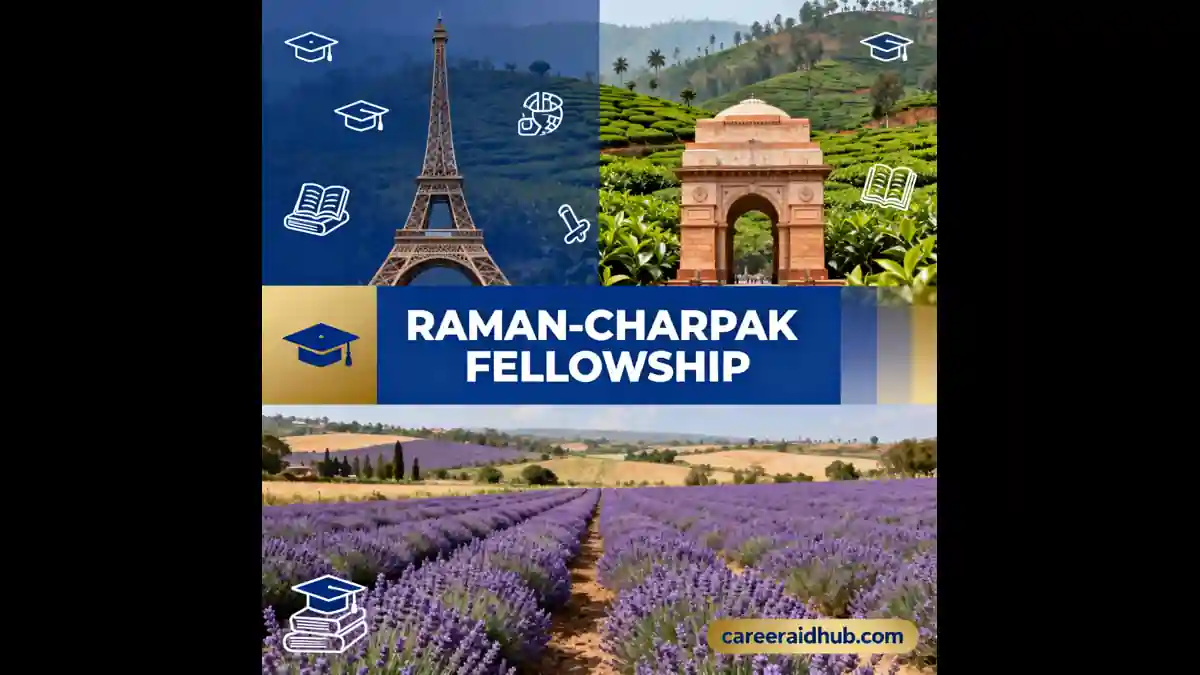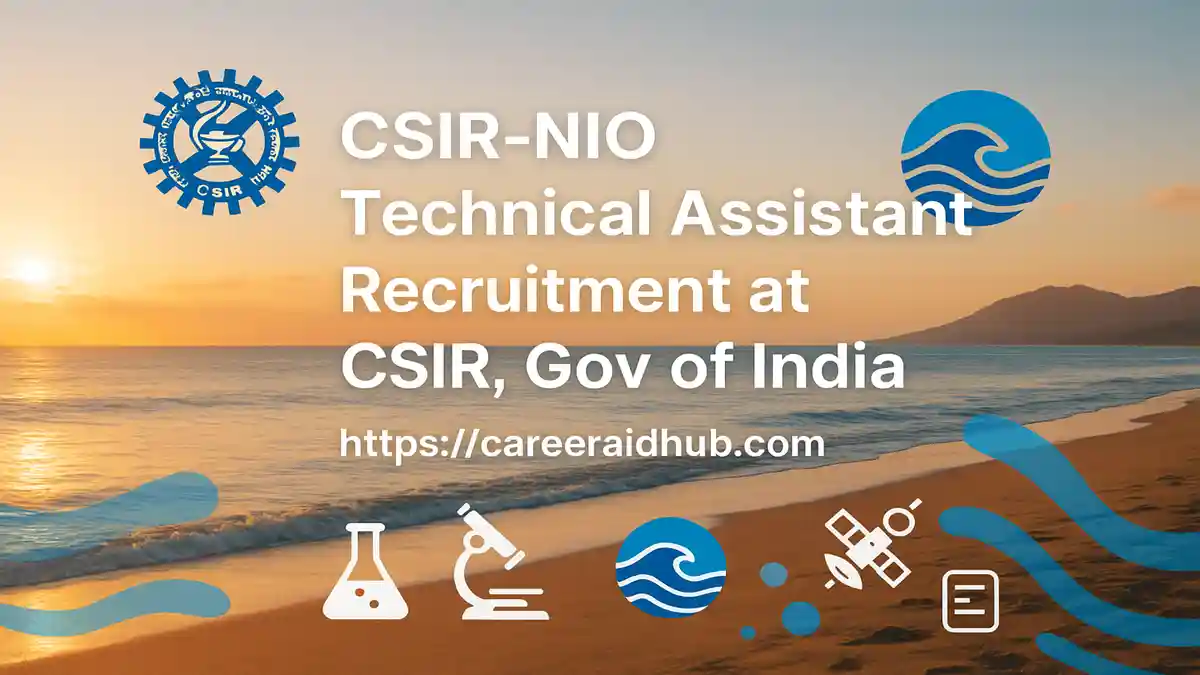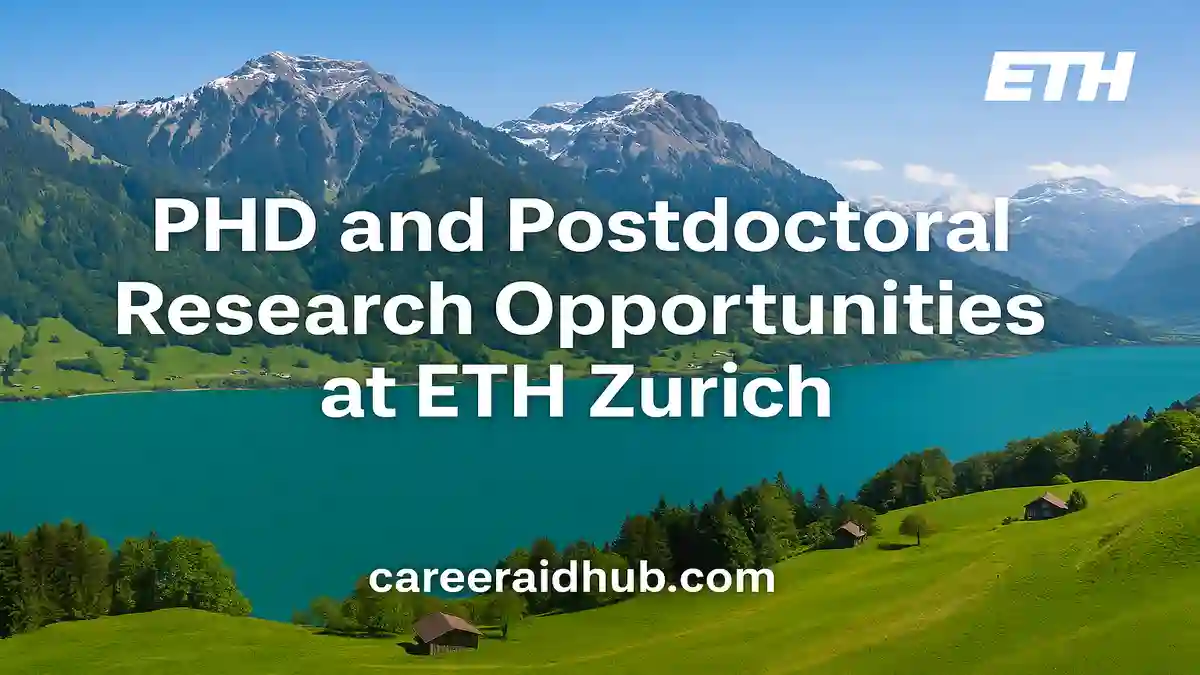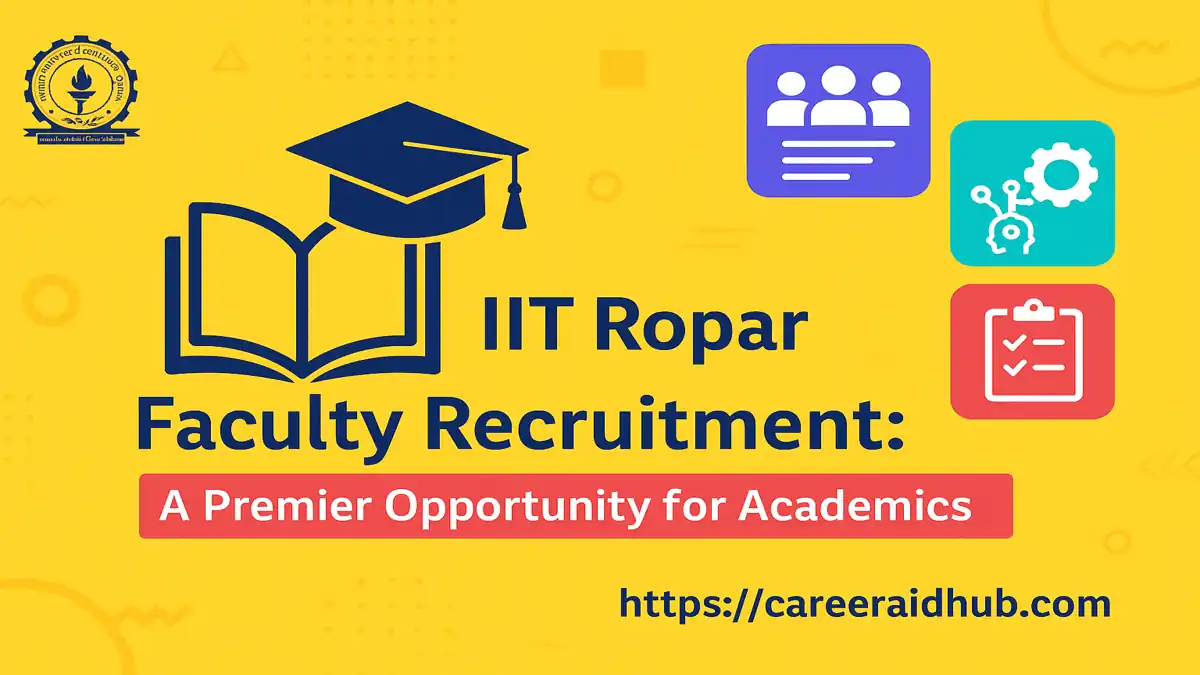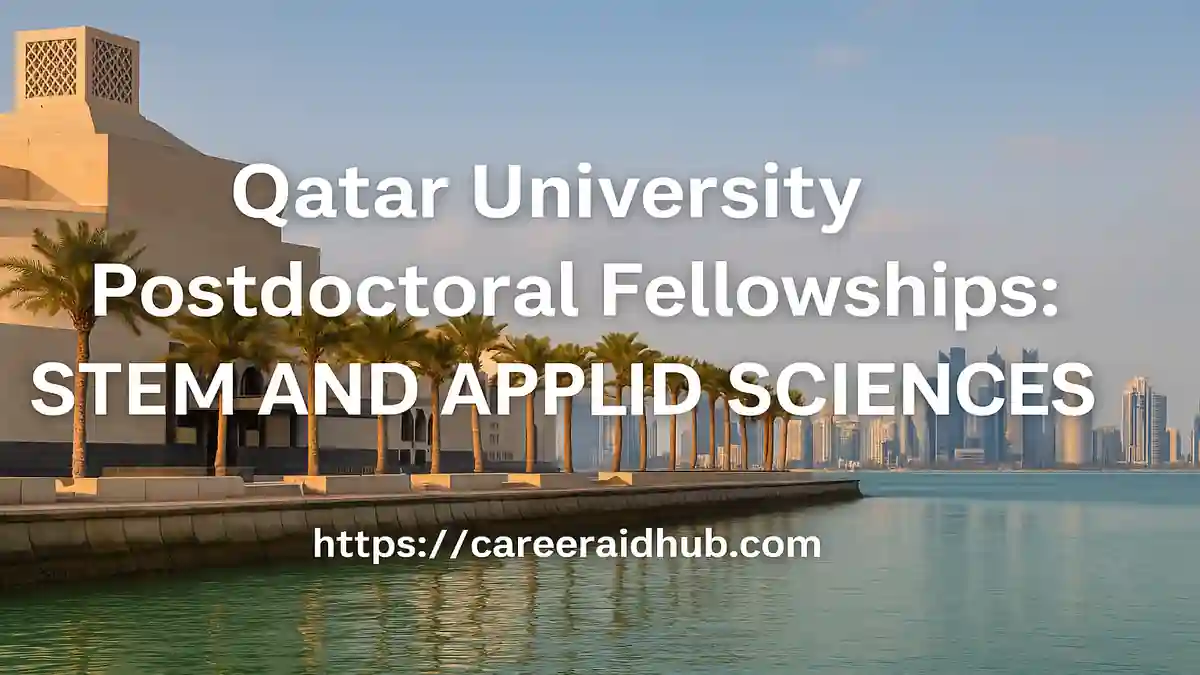RAMAN–CHARPAK FELLOWSHIP 2025: Complete Guide for Indian & French PhD Students (and French Master’s Students)
The Raman–Charpak Fellowship (RCF) 2025 enables short-term, bilateral research exchanges between India and France, allowing Indian and French PhD candidates—and, importantly, French Master’s students—to conduct part of their research at a host institution across the border. The official call specifies funding levels, eligibility, required documentation, and a stepwise selection timeline, all administered by CEFIPRA/IFCPAR with support from India’s DST and the French Embassy/IFI. To ensure accuracy, consult the authoritative call document before preparing your file.
Design a focused 2–5 month visit with full mobility support, clear deliverables, and joint mentoring across India and France. The Raman–Charpak Fellowship 2025 funds PhD exchanges in either direction and welcomes French Master’s students for internships in India—an excellent springboard to high-impact, binational research careers and long-term collaboration.
What the Fellowship Covers
Short, well-resourced visits are the heart of RCF. The scheme funds essentials so researchers can focus on experiments, fieldwork, data integration, or method transfer without administrative friction.
Funding for Indian fellows (hosted in France)
Indian PhD students visiting France receive a monthly fellowship of €1,710, intended to cover living costs, local travel, and accommodation. In addition, applicable social security coverage is provided to meet host-country compliance.
Funding for French fellows (hosted in India)
French
PhD candidates visiting India receive a
₹40,000/month fellowship for living and local travel
plus accommodation support up to ₹45,000/month. This structure reflects typical rental and subsistence costs in Indian research hubs.
Travel, insurance, and fees
Both Indian and French fellows receive an economy-class return airfare, along with support for insurance (travel/health where required) and visa/registration fees. These provisions reduce out-of-pocket costs and streamline the start of the visit.
Conference allowance and exclusions
Fellows may claim a modest conference/workshop allowance (up to €500 equivalent) for registration and local travel during the fellowship. Claims are reimbursed post-visit against receipts. Family accompaniment is not funded, which helps maintain focus and budget discipline.
Why this funding model works
Because the visit length is deliberately 2–5 months, the package emphasizes agility: enough time to run targeted experiments, facility access, and data sprints, yet compact enough to fit within standard semester planning and thesis timelines.
Who Can Apply (PhD & French Master’s Tracks)
Eligibility rules are precise and aim to maximize binational value while ensuring candidates can be productively embedded in host labs.
PhD track (Indian and French applicants)
-
- Indian applicants:
Indian citizens residing in India, registered for a PhD at a recognized Indian university/research institute—typically in the 2nd or 3rd year at application.
- French applicants: residents of France, registered for a PhD at a recognized French university/research institute.
- Age limit: ≤ 30 years on 1 April of the call year.
- Host rule: Indian applicants must secure a French host; French applicants must secure an Indian host.
- Not eligible: applicants previously funded by CEFIPRA (including through other CEFIPRA projects) or those holding a permanent position.
- Institutional consent: a No-Objection/Pre-authorization from the home institution is required prior to submission.
French Master’s track (internship in India)
-
- Status: French students enrolled in M1 (planning the visit in M2) or already in M2.
- Age limit: ≤ 30 years on 1 April of the call year.
- Host rule: the internship host must be in India.
- Not eligible: students already funded by CEFIPRA or holding permanent roles.
Practical note: Certain laboratories maintain restricted access (e.g., biosafety, radiation, or secure data settings). Therefore, ask your proposed host to confirm access and onboarding timelines before you apply.
Duration, Fields, and Expected Outputs
justify;">RCF funds
short, high-intensity research stays that deliver tangible outcomes.
Visit length and field coverage
-
- Duration: minimum 2 months and maximum 5 months.
- Fields: from atmospheric and environmental research to materials/physical/chemical sciences, engineering, life/medical sciences, mathematics/computation, and agricultural sciences. Interdisciplinary projects are welcome.
Outcome expectations
Because the window is compact, define a tight scope aligned with host capabilities. Typical outputs include publishable data, co-authored manuscripts, shared code or datasets, pilot method/technology validation, or a graded internship report for Master’s students. Align deliverables with your thesis milestones and, where applicable, with host-lab project cycles.
Required Documents: What to Prepare Early
Applications are completed online and must strictly follow formatting and naming conventions. Assemble materials early to avoid last-minute issues.
For PhD applicants (India or France)
-
- Online application via the CEFIPRA portal.
- Research plan (≤5 pages): title, objectives, methods, work plan, and a clear statement of host-added value.
- CV (≤2 pages) with photo and up to five key publications (attach first pages together).
- Two letters: one from the PhD supervisor and one from the host supervisor confirming the visit and lab access (if applicable).
- PhD
synopsis/summary (≤2 pages).
- No-Objection Certificate (for Indian applicants).
- Passport scan (front/back) and a recent photograph.
For French Master’s applicants (internship in India)
-
- Online application via the CEFIPRA portal.
- Diploma copy (Licence or M1), proof of registration (M1/M2), and any required submission/acceptance documentation. Updates may be requested by end of September.
- Research/educational plan (≤5 pages) aligning internship tasks with academic requirements.
- CV (≤2 pages) with photo and up to five key items.
- Recommendations from French faculty/Master’s head and host agreement from the Indian lab.
- Optional publications/experience, plus passport and photograph.
Formatting and submission discipline
Respect page limits, use prescribed templates, and follow file-naming rules (e.g., “LoR1_YourName”). Incomplete dossiers or late submissions are not considered. After a successful upload, avoid duplicate resubmissions unless instructed.
2025 Timeline and Practical Planning
Planning ahead is essential, especially for visas, insurance, and housing in peak periods.
Indicative sequence
-
- Call window: September–December (launch in late September; deadline typically early–mid December).
- Administrative screening: January–February.
- Expert evaluation: February–March.
- Results: late March/early April.
- Fellowship start: after results in coordination with host and university calendars.
Travel, compliance, and scheduling
Book visa appointments early, clarify insurance requirements, and pre-arrange housing with your host’s help. For Master’s students, synchronize with coursework and internship credit requirements. If your stay exceeds three months, verify any additional formalities (e.g., Campus France processes) and factor them into your start date.
Next cycle prediction
Based on historical patterns, anticipate a similar September–December call window for the next cycle; we will update soon as official dates are released.
How to Craft a Competitive RCF Application
Strong applications prove feasibility within a short window while demonstrating high binational value.
1) Define a precise, short-stay objective
Select tasks that fit 2–5 months: a specialized instrument run, a field campaign, a method transfer, or a data integration sprint that unlocks a publication or core thesis chapter.
2) Show complementarity and co-supervision
Specify who contributes what—techniques, datasets, facilities—and how co-supervision accelerates progress. Name mentors on both sides and define their roles.
3) Map milestones to weeks, not months
Present a week-by-week or biweekly schedule that includes onboarding, data collection, analyses, and manuscript drafting. This granularity reassures reviewers about feasibility.
4) Plan for publication and dissemination
Identify target journals or venues and outline a realistic writing plan. Where appropriate, propose data/code release timelines. For Master’s internships, map outcomes to program requirements.
5) De-risk logistics early
Address ethics/IRB, biosafety, data-access permissions, lab access, and procurement/booking timelines. Add fallback options in case facilities or field sites are temporarily unavailable.
Common Pitfalls—and How to Avoid Them
-
- Over-ambition: attempting an entire thesis chapter. Instead, select one high-yield deliverable aligned to host capabilities.
- Vague host role: replace generic “collaboration” language with a concrete lab work plan.
- Late approvals: request No-Objection and departmental sign-offs well ahead of the deadline.
- Budget opacity: even with fixed stipends, justify your duration and any conference allowance with clear, outcome-linked reasoning.
How to Apply: A Simple Checklist
-
- Secure host consent and confirm facility/data access in writing.
- Draft the 5-page plan with precise objectives, methods, and a compressed schedule.
- Collect letters (home supervisor, host supervisor; Master’s head for the French M-track).
- Assemble CV, synopsis, and passport; follow naming conventions exactly.
- Submit online and verify success; avoid duplicate submissions unless requested.
- Prepare for travel—visa, insurance, and housing aligned with your visit dates.
Conclusion
The Raman–Charpak Fellowship 2025 is a focused, mobility-first mechanism for advancing binational research through short, deliverable-driven stays. Clear eligibility, structured funding on both sides, and a predictable annual rhythm make it practical for Indian and French PhD candidates—and French Master’s students—to produce measurable outcomes, co-authored work, and durable partnerships. For announcements, templates, and the application portal, consult the official CEFIPRA page.
Quick-Glance Feature Table
| Feature |
Details |
| Program Name |
Raman–Charpak Fellowship (RCF) |
| Host Country/Region |
India ↔ France (reciprocal mobility) |
| Funded By |
CEFIPRA/IFCPAR; supported by DST (India) and IFI/French Embassy |
| Duration |
2–5 months (short-term exchange) |
| Study Mode |
Full-time, in-person research visit at host institution |
| Eligibility |
Indian or French PhD students (typically in 2nd/3rd year for Indian applicants); French Master’s students also eligible for India internships |
| Financial Support |
Monthly allowance, accommodation support, economy return airfare, insurance/visa/registration support, conference allowance (subject to caps) |
| Fields of Study |
Broad coverage: atmospheric/earth/environmental, materials, physical, chemical, engineering, life/medical, math/computational, agricultural sciences |
| Deadline |
Official call months: September–December; we will update soon |
| Official Website |
Click Here |
FAQs: Raman–Charpak Fellowship (RCF)
Who can apply for the Raman–Charpak Fellowship? Professors cannot apply; instead, Indian or French PhD students and French Master’s students (for India internships) apply with confirmed hosts and institutional permissions.
What is the fellowship duration and visit length? The fellowship supports short, focused research visits lasting two to five months; moreover, applicants should align milestones tightly to the selected duration.
Does the fellowship fund international travel and insurance? Yes. It covers economy return airfare and, additionally, essential insurance and visa or registration fees required for the research visit.
Are stipends different for Indian and French fellows? Yes. Indian fellows hosted in France receive a monthly euro stipend; meanwhile, French fellows hosted in India receive a rupee stipend plus accommodation support.
Can I purchase research equipment with RCF funds? No. The fellowship funds living, travel, and research-related consumables; however, it does not purchase major equipment for awardees.
Which disciplines are eligible under RCF? All major STEM fields qualify, including environmental sciences, engineering, life sciences, materials, computation, and agriculture; importantly, interdisciplinary projects are also welcome.
What documents strengthen an RCF application? Provide a concise five-page plan, supervisor and host letters, CV, thesis synopsis, and proof of registration; consequently, reviewers can assess feasibility quickly.
Can early-stage PhD students apply? Yes, if registered and meeting age and program conditions; however, proposals should demonstrate readiness for productive short-stay research.
When does the application window usually open? Historically, calls open in early autumn and close before winter; therefore, prepare materials and institutional approvals well in advance.
How can I improve my selection chances? Define one high-impact objective, map weekly milestones, confirm lab access, and, furthermore, show clear binational complementarity and publishable outcomes.

